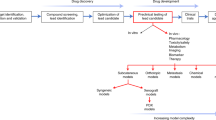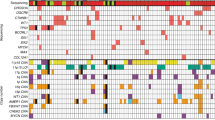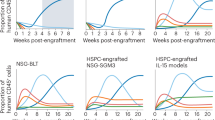Abstract
Mice immunologically deprived by thymectomy, cytosine arabinoside treatment and whole-body irradiation were used to study the growth of human tumours as xenografts. 10/16 melanoma biopsies, 4/13 ovarian carcinoma biopsies and 3/6 uterine cancer biopsies grew as serially transpllantable xenograft lines. The tumour lines were studied through serial passages by histology, histochemistry, electron microscopy, chromosome analysis, immune fluorescence, growth rate measurement and mitotic counts. They retained the characteristics of the tumours of origin, with the exception of loss of pigmentation in two melanomas, histological dedifferentiation in the uterine carcinomas, and increased mitotic frequency and growth rate in some melanomas. It was concluded that this type of animal preparation is as useful as alternative methods of immunological deprivation, or as athymic nude mice, for the growth of human tumour xenografts, at least for some experimental purposes.
This is a preview of subscription content, access via your institution
Access options
Subscribe to this journal
Receive 24 print issues and online access
$259.00 per year
only $10.79 per issue
Buy this article
- Purchase on Springer Link
- Instant access to full article PDF
Prices may be subject to local taxes which are calculated during checkout
Similar content being viewed by others
Rights and permissions
About this article
Cite this article
Selby, P., Thomas, J., Monaghan, P. et al. Human tumour xenografts established and serially transplanted in mice immunologically deprived by thymectomy, cytosine arabinoside and whole-body irradiation. Br J Cancer 41, 52–61 (1980). https://doi.org/10.1038/bjc.1980.7
Issue Date:
DOI: https://doi.org/10.1038/bjc.1980.7
This article is cited by
-
Epithelial ovarian cancer experimental models
Oncogene (2014)
-
Brain tumor growth and response to chemotherapy in the subrenal capsule assay
Journal of Cancer Research and Clinical Oncology (1983)



